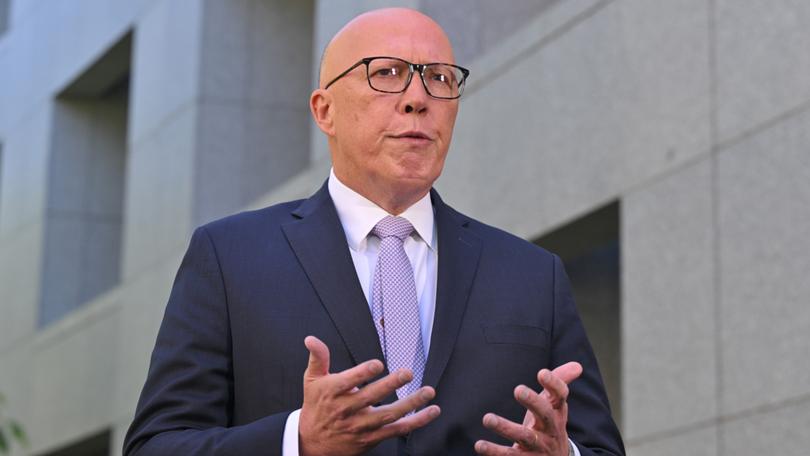CSIRO finds nuclear still most expensive power as Coalition prepares to release costings

Energy gurus at the national science body still believe nuclear power will be more expensive than alternatives, as a political fight over the merits of the generation source heats up.
The Coalition is preparing to release costings this week for its plan to build nuclear reactors across the country, Peter Dutton has confirmed.
It comes almost six months after the Opposition Leader released his party’s plan to convert seven coal-fired power station sites around the country to nuclear power between 2035 and 2050.
Sign up to The Nightly's newsletters.
Get the first look at the digital newspaper, curated daily stories and breaking headlines delivered to your inbox.
By continuing you agree to our Terms and Privacy Policy.However, the CSIRO’s latest draft GenCost report — which weighs up the price tag of different electricity sources — estimated nuclear power costs at least 50 per cent more than green energy, even factoring in storage.
New solar and wind projects with backup were expected to deliver power as cheaply as $100 per megawatt hour over their lifetime, the draft report released on Monday showed. Coal was in a similar range, but only when the costs of emissions were not factored in.
Large-scale nuclear would be expected to cost $150/MWh, the CSIRO said.
Nevertheless, Mr Dutton says his plan will supply cheaper, more reliable energy to households and businesses.
“If we want to keep the lights on and we want to keep our economy growing, then that’s why nuclear deserves a mature conversation,” he said on Sunday.
“I’m not holding a candle for nuclear, or for hydro, or for gas, or whatever it might be… We need a mix, and we’re strongly supportive of renewable energy, but it needs to be underpinned by a permanent 24/7 power.”
He conceded that to bring power prices down in the short-term, “we need to bring a significant amount of gas into the system (and) coal is going to be in the system for longer than Labor’s admitting at the moment.”
Cabinet minister Murray Watt accused Mr Dutton of publishing his costings while many Australians were focused on the summer holidays.
“Peter Dutton is planning to take out a big bucket of radioactive waste in the lead up to Christmas to try to hide the fact that his costings don’t stand up, that he will be making electricity far more expensive, that his policy will only deliver about 4 per cent of our energy needs, and it won’t even happen,” he said.
“If he was actually proud of his policy and confident of it, it would have been out some time ago.”
Mr Dutton said last week the Coalition had planned to release its nuclear power costings multiple times since June but pulled back to let the Government stew in its own political woes.
The new Coalition report will be the second of two by Frontier Economics modelling energy costs, this one examining the effect of adding nuclear power to the grid.
Its first analysis, released in mid-November and which it said was done on its own initiative, tested its assumptions against modelling by energy regulator AEMO for a switch to a system dominated by wind and solar power with storage.
This found the base generation costs between now and 2050 would be $528 billion, taking inflation into account, slightly lower than AEMO’s projection of $580 billion.
Frontier also noted the AEMO costings did not include transmission costs of about $62 billion.
The CSIRO GenCost report became politically charged earlier this year after the Coalition questioned its assumptions.
Lead author Paul Graham said his team had closely reviewed the issues in preparing the latest version.
Their analysis found a longer life would not significantly reduce the cost of nuclear power compared to renewables because reactors needed to be updated through a major investment program after about four decades of operation.
“Similar cost savings can be achieved with shorter-lived technologies, including renewables, even when accounting for the need to build them twice,” Mr Graham said.
“The lack of an economic advantage is due to the substantial nuclear reinvestment costs required to achieve long operational life.”
Mr Graham said Australia’s baseload coal generators had been running less often and at lower power than nuclear other countries, suggesting new reactors might not be used at full capacity.
